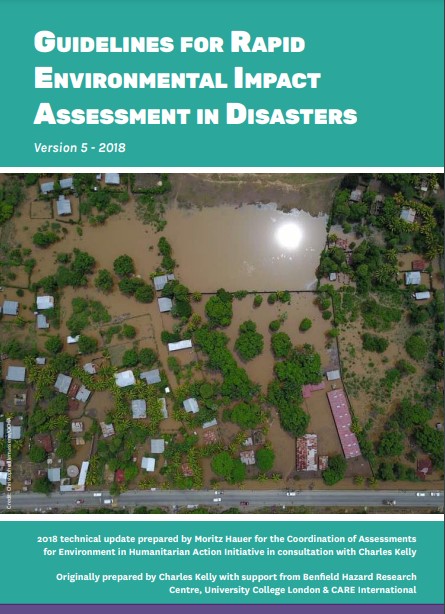The Guidelines for Rapid Environmental Impact Assessment in Disaster (REA) is a tool to identify, define, and prioritize potential environmental impacts in disaster situations. A simple, consensus-based qualitative assessment process, involving narratives and rating tables, is used to identify and rank environmental issues and follow-up actions during a disaster. The REA is built around conducting simple analysis of information in the following areas:
- The general context of the disaster/conlict.
- Disaster/conlict related factors which may have an immediate impact on the environment.
- Possible immediate environmental impacts of disaster/conlict agents.
- Unmet basic needs of disaster/conlict survivors that could lead to adverse impact on the environment.
- Potential negative environmental consequences of relief operations.
The REA is designed for natural, technological or political disasters or crises, and as a best practice tool for effective disaster assessment and management. The REA does not replace an environmental impact assessment (EIA), but fills a gap until an EIA is appropriate. The REA can be used from shortly before a disaster up to 120 days after a disaster begins, or for any major stage-change in an extended crisis. Since the design of the REA in 2003, it has been used in a range of ways, from a compressed and rapid version in the first days of a disaster to a more thorough process involving many stakeholders that has overlapped with the recovery stage of a large-scale disaster. The tool is flexible and adaptable to different scenarios.


